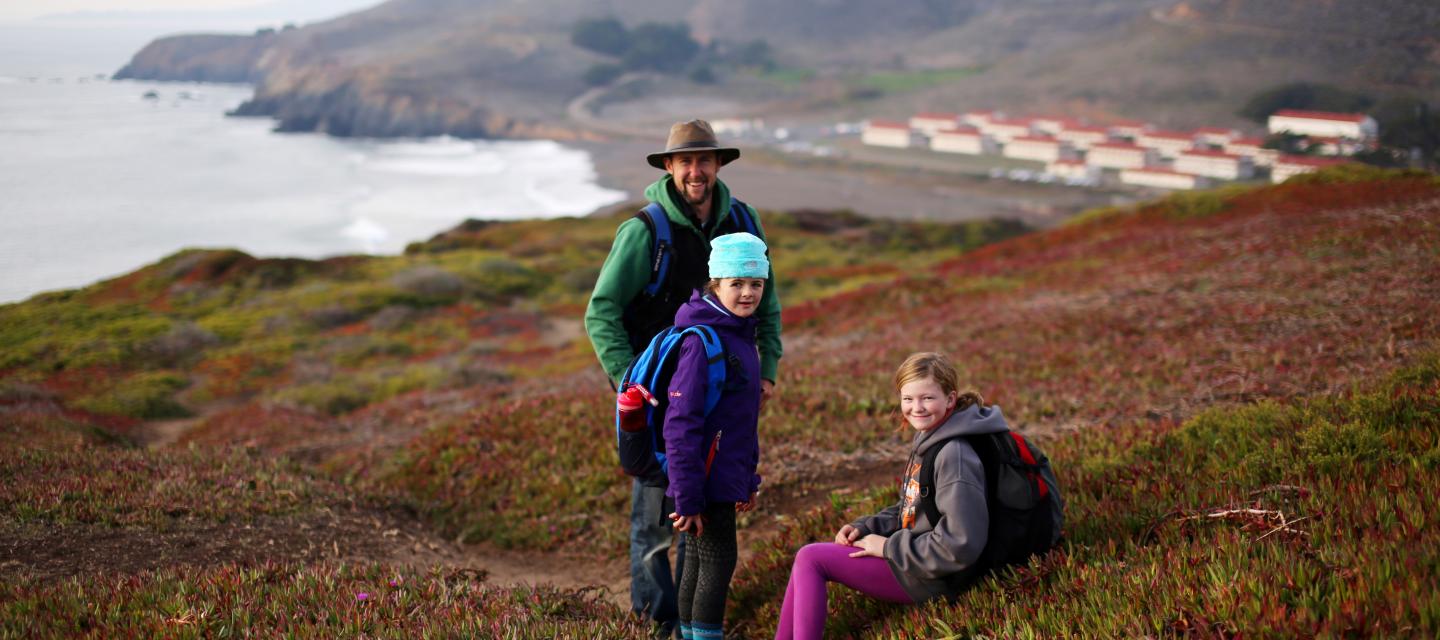Through videos, activities and discussion, students will explore where the land meets the sea in the Marin Headlands, part of the Golden Gate National Recreation Area. NatureBridge educators will lead students on a virtual hike along the beach to gain a sense of familiarity and connection with the park. Students will get to dive into the ocean, observing and learning about the importance of plankton and how it brings life to our world. Students will then take their knowledge of small things having a big impact and explore how they are connected to the ocean.
Program Format #
Two educators lead each 60-minute session as presenter and host using a video conference platform such as Zoom. Attending teachers participate as chaperones who observe and assist students as needed. Interactive technology tools may include Prezi, Jamboards, Google Slides, breakout sessions and participant polls.
Session 1: Exploration and Connect 60-minute live session
During this session, students will develop a connection to the Golden Gate National Recreation Area, themselves and each other. Through video observations, sketching and questioning, they will explore the Marin Headlands, Rodeo Beach, and the geography and human history of the area. Students will also begin seeing how they are connected to the ocean.
Session 2: Plankton Lab: Small Change, Big Impact 60-minute live session
Utilizing our plankton lab, students will see how these small plants and animals are the building blocks to life. Students will make observations on these small but mighty beings under a microscope. By exploring the interconnections between all living things within the ocean ecosystem, students will begin to build their own understanding of a complex food web.
Session 3: Plankton, People and Problem-Solving 60-minute live session
Not only are we dependent on the ocean but ocean life is dependent on us. Students will explore the interconnections between human activity and ocean life, and come up with ideas to solve problems facing our seas. Utilizing games, collaboration and activities, students will see how they can have a positive impact on the oceans and seas.
Outcomes #
Students will be able to:
- Describe abiotic, biotic and cultural factors of a beach ecosystem.
- Make connections between how different parts of an ecosystem interact with one another.
- Give examples of interdependence within a food web.
- Give examples of how people depend on plankton to survive.
- Describe human-caused problems that impact ocean ecosystems.
- Develop solutions to help reduce human impact on the ocean.
Standards Alignment #
- Disciplinary Core Ideas: LS2 Ecosystems: Interactions, Energy, and Dynamics; ESS3: Earth and Human Activity
- Practices of Science and Engineering: Asking questions and defining problems; Developing and using models; Constructing explanations and designing solutions; Obtaining, evaluating and commuting information
- Crosscutting Concepts: Patterns; Cause and effect; Systems and system models
- NGSS Standards: MS-LS2-4, Construct an argument supported by empirical evidence that changes to physical or biological components of an ecosystem affect populations. MS-ESS3, Apply scientific principles to design a method for monitoring and minimizing a human impact on the environment
Materials Needed #
Access to a computer, tablet or other online learning compatible device. Pen/pencil/writing utensil and paper.
Adult Expectations #
At least one teacher will be present throughout each live online session. Other adults may attend by invitation from the teacher or group coordinator. All attending adults must complete NatureBridge’s Participant Registration Form in advance of the session.
It is the responsibility of attending adults to support student learning and safety during large group instruction and small breakout sessions by following the expectations listed below.
- Support students in staying on task.
- Address discipline concerns while allowing students to be engaged and answer questions on their own.
- Demonstrate a positive attitude and model inclusive behavior.
- Communicate with the group’s NatureBridge educator about the educational plan and offer constructive feedback when appropriate.
Schedule this Program #
